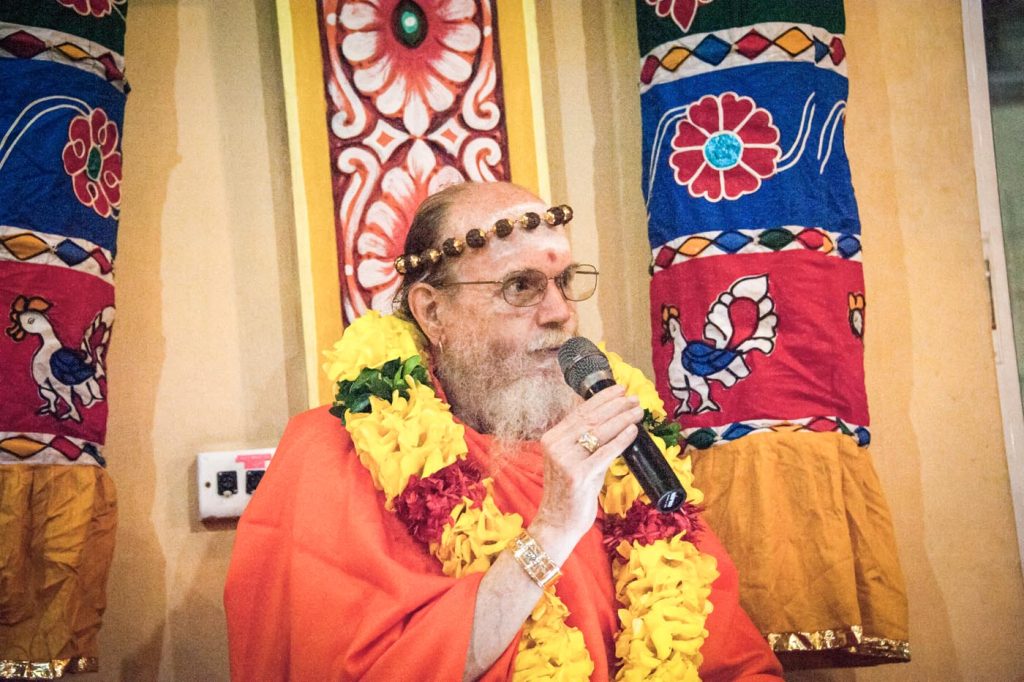Historic Ram Temple in Ayodhya

I read the article “Ram Janmabhoomi” (in July/Aug/Sep 2024) with great interest. However, I was disappointed with the section titled “The New Ayodhya,” where the author echoed the stance of various Hinduphobic publications when it comes to the history behind one of our most sacred sites. She completely omitted the Hindu community’s perspective, along with overwhelming historical evidence, and simply wrote that “Hindu groups claimed the [Babri Masjid] mosque was constructed on the birthplace of their God Ram.” The history of Ram Janmabhoomi does not begin with the Babri Masjid and is not a concocted modern day claim. The Indian Supreme Court gave a unanimous 5-0 decision in favor of Ram Janmabhoomi because of overwhelming evidence that there indeed existed a magnificent Hindu temple that was destroyed and repurposed into a mosque. The Archeological Survey of India has recovered countless Hindu artifacts from this site and 16th century historians have definitively chronicled the destruction of this temple. A more recent British publication in 1891 entitled “The Monumental Antiquities and Inscriptions in the Northwestern Provinces and Oudh” clearly mentions there was a significant temple called “Janmasthan” at the time of the Islamic invasions. In addition to all of this, Hindu civilizational memory never forgot, even after 500 years, that this was the sacred space once dedicated to Bhagwan Ram in his child form. Instead of repeating the dominant narrative set by certain biased media platforms, it is imperative that we as Hindus not be afraid to speak our truth to power.
Rajesh Verma
rverma2001@yahoo.com
Editors’ response: Thank you very much for pointing out the unintended implications of this summary paragraph on the site’s history. There was no intention to cast doubt upon the fact the Muslims did indeed tear down Ram’s temple to build the mosque, as they had thousands of others in India. For the benefit of readers of that article, this is the paragraph in question:
“The genesis of Ayodhya’s transformation can be traced back to the land dispute involving Babri Masjid mosque, which was built in the 16th century by the Mughal emperor Babur. Hindu groups claimed the mosque was constructed on the birthplace of their God Ram. A series of legal battles and communal tensions led to the demolition of the mosque in 1992, sparking widespread riots across India which claimed 2,000 lives, mostly of Muslims. A 2019 Supreme Court ruling allowed the construction of the Ram Janmabhoomi Temple at the site.”
The text on our website will be revised to read as follows: The genesis of Ayodhya’s transformation can be traced back to a land dispute involving Babri Masjid mosque, which was built in the 16th century by the Mughal emperor Babur after demolishing a large temple marking the birthplace of Lord Ram. Hindu protests to reclaim the sacred site started in 1853 and continued until modern times, culminating in the demolition of the mosque in 1992 which sparked riots across India and neighboring Pakistan and Bangladesh. In 2019, India’s Supreme Court ruled that the site belong to Hindus. The decision was based on an investigation of the site by the Archeological Survey of India which clearly showed the mosque was built after the destruction of a Hindu temple on the same location. Construction of the new temple started almost immediately after the decision.
– The Editors
Sri Adi Shankara
I thoroughly enjoyed reading your article, “Adi Shankara, India’s Great Spiritual General” (Jul/Aug/Sep 2024) written by Swami Advayananda, Brahmacharini Taarini Chaitanya and Sudarshan Ramabadran.
Shankaracharya’s Advaita Vedanta is considered superior to other philosophies in academic circles for its logical rigor, comprehensive commentary on sacred texts, unification of diverse philosophical strands, and profound spiritual depth. His systematic approach, dialectical skills, and ability to synthesize various philosophical traditions into a coherent non-dualistic framework have cemented his legacy as a preeminent philosopher. The practical and experiential dimensions of his teachings further enhance the relevance and appeal of Advaita Vedanta, ensuring its enduring influence and academic recognition.
Pradeep Srivastava
pradeepscool@hotmail.com
God’s Favorite Flower
Reading this article (July 1999), I never realized how deeply ingrained the lotus flower is in Hindu culture and religion. It’s fascinating to learn about its symbolism, from representing purity and divinity to being associated with various deities.
David Mooore
mrdavidmooore@gmail.com
Neem Karoli Baba
Thank you for this lucid story (Jan/Feb/Mar 2024) of a saint who inspired many. His life was a spark of devotion and love that has ignited the quest in many. Love is a mighty force that makes many things possible.
Jay Thakar
jhthakar@gmail.com
From: “Fourteen Questions People Ask About Hinduism”
Why do many Hindus wear a dot on their forehead?

The dot worn on the forehead is a religious symbol. It represents divine sight and shows that one is a Hindu. For women, it is also a beauty mark.It is called the bindi in the Hindi language, bindu in Sanskrit and pottu in Tamil. In olden days, all Hindu men and women wore these marks, and they both also wore earrings. Today it is the women who are most faithful in wearing the bindi.
The dot has a mystical meaning. It represents the third eye of spiritual sight, which sees things the physical eyes cannot see. Hindus seek to awaken their inner sight through yoga. The forehead dot is a reminder to use and cultivate this spiritual vision to perceive and better understand life’s inner workings—to see things not just physically, but with the “mind’s eye” as well. The bindi is made of red powder (called sindur, traditionally made from powdered turmeric and fresh lime juice), sandalpaste or cosmetics.
In addition to the simple dot, there are many types of forehead marks, known as tilaka in Sanskrit. Each mark represents a particular sect or denomination of our vast religion. We have four major sects: Saivism, Vaishnavism, Shaktism and Smartism. Vaishnava Hindus, for example, wear a v-shaped tilaka made of white clay. Elaborate tilakas are worn by Hindus mainly at religious events, though many wear the simple bindi, indicating they are Hindu, even in the general public. By these marks we know what a person believes, and therefore know how to begin conversations.
For Hindu women, the forehead dot is also a beauty mark, not unlike the black mark European and American women once wore on the cheek. The red bindi is generally a sign of marriage. A black bindi is often worn before marriage to ward off the evil eye. As an exotic fashion statement, the dot’s color complements the color of a lady’s sari. Ornate bindis are even worn by actresses in popular movies and TV shows.
Men and women of a particular religion wishing to identify themselves to one another often do so by wearing distinctive religious symbols. Often these are blessed in their temples, churches or synagogues. Christians wear a cross on a necklace. Jewish boys wear small leather cases that hold scriptural passages, and the round cap called yarmulka. Sikh men wear their hair in a turban. In many countries, Muslim women cover their head with a scarf, called hajib.
Do not be ashamed to wear the bindi on your forehead. Wear it proudly. The forehead dot will distinguish you from all other people as a very special person, a Hindu, a knower of eternal truths.
Giving Temple Goers Much-Needed Knowledge
The center of this issue is a good example of the resources we provide to the world

By Satguru Bodhinatha Veylanswami,
publisher of Hinduism Today
Visiting a Hindu Temple,” the Educational Insight in this issue, states, “Be they luxurious palaces, rustic warehouses, simple halls or stone sanctuaries, Hindu temples are springing up all over the world, numbering in the hundreds of thousands. Yet outside of India and a few places like Sri Lanka, Nepal and Bali, what happens inside these temples remains a mystery—to young generations of Hindus as well as to curious newcomers. It’s all a bit intimidating at first.” Clearly there is a need to demystify the Hindu temple in order for young generations of Hindus as well as newcomers to feel comfortable enough to enter the temple and participate in the worship.
This feature does just that in answering common questions that arise: Why are temples important? What are the customs and protocols, the dos and don’ts? What attitudes should one hold inside? Do all those rituals have a meaning? What is the priest chanting? All these musings and more are addressed here to help newcomers—both Hindus and non-Hindus—enjoy and benefit from their temple visits.
To mention three of the major sections: The section “What Is Puja All About?” provides a detailed description of the sequence of actions the priest performs during a typical puja—a ceremony similar to a grand reception for a king.
In the section “Puja Is Communion” the inner, mystical perspective of the rites is explored. “Chanting and satsanga and ceremonial rituals all contribute to this sanctifying process, creating an atmosphere to which the Gods are drawn and in which they can manifest. By the word manifest, I mean they actually come and dwell there and can stay for periods of time, providing the vibration is kept pure and undisturbed.”
Certainly a major confidence builder for newcomers is “18 Steps for Visiting a Hindu Temple.” Each of the steps, from arrival to departure, is described and has a photograph of devotees performing it to provide additional clarity.
We encourage our readers to share “Visiting a Hindu Temple” with individuals they know who are interested in attending a Hindu temple but are not confident or knowledgeable enough to do so.
Help our magazine navigate today’s shifting currents, remaining strong and able to continue fulfilling its vital mission. We ask all who would support Hinduism Today to direct donations—yearly, monthly or occasional—to the Hinduism Today Current Expense Fund to meet day-to-day expenses:
Donate at: bit.ly/help-HT, or contact us at: +1-888-464-1008 • support@hindu.org
